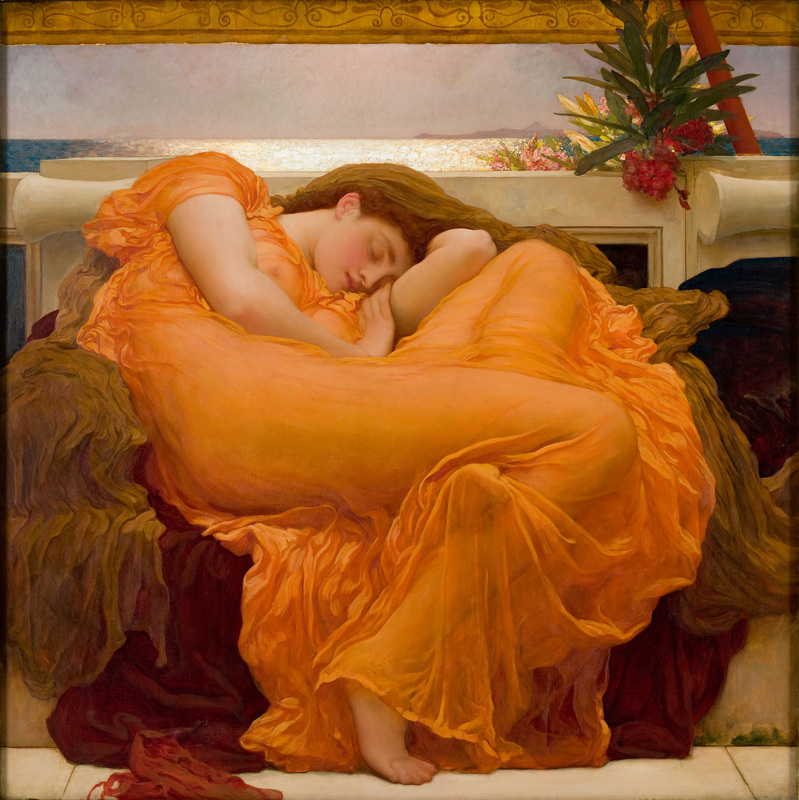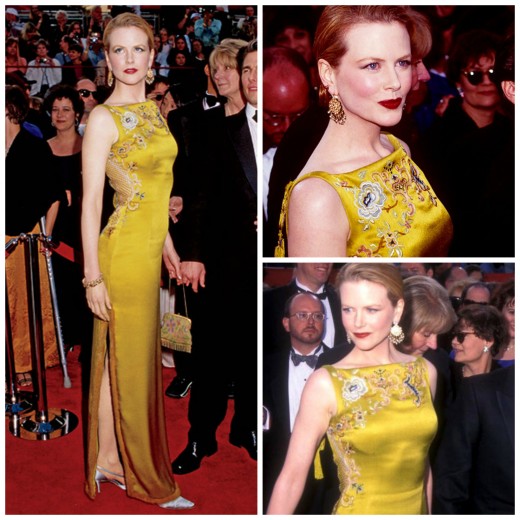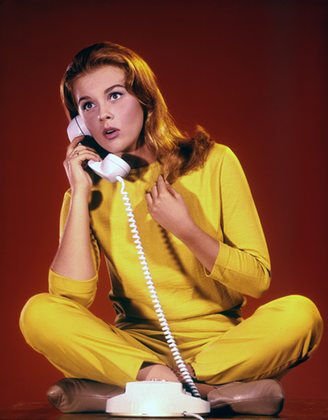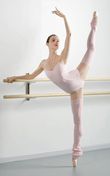I also thought immediately of Moira Shearer, whose saturated crimson tresses matched her red satin slippers in the film The Red Shoes. I love this movie, as I think so many dancers do. Coincidentally, this summer I stumbled across Moira Shearer’s 1987 biography of George Balanchine, Balletmaster. It is an odd piece of literature. She barely knew Balanchine, and she quotes frequently from Bernard Taper’s definitive biography from three years prior. She fully admits her outsider status, though, like when she recounts an awkward tête á tête with Lincoln Kirstein. He demanded of her: “How can you write? What do you know? You don’t know the repertory.”
The book is out of print and it’s easy to see why. Although there are several details that were new to me, it is often a regurgitation of other sources. She is at her best when she tells stories from her (clearly extensive) interviews with Balanchine’s exes Alexandra Danilova and Brigitta (Vera) Zorina, and longtime secretary Barbara Horgan. She is at her worst while hypocritically criticizing critics like Edwin Denby. She even rewrites a passage of his “excessively flowery” review of Apollo in
But her motivation for tackling such a project is unique. She had four rehearsals with Balanchine in London in 1950 when he set Ballet Imperial (now called Tchaikovsky’s Piano Concerto #2) for the Royal Ballet, and she felt they changed her life. Shearer was second cast to Margot Fonteyn in the ballet and she didn’t expect any private rehearsals, so she was very nervous and thought she danced poorly. But after she completed her first difficult solo, Balanchine walked up to her and kissed her. “Had I not just been married and with my life about to take a new turn, I think I would have followed George Balanchine back across the Atlantic in the hope of joining his New York City Ballet. Instead we never met again,” she writes ruefully.
Balletmaster, then, is written from a road-not-taken position. Shearer wants to understand the man who made such a great impression on her, but who was forever a mystery to her. Clearly there was some sexual tension between them, and she is quite interested in Balanchine’s love affairs with Danilova, Zorina, Maria Tallchief, Tanaquil Leclerq, and Suzanne Farrell. She speculates freely about his marriages and sex life. Of his relationship with Zorina she writes: “[s]he was twenty, he was thirty-three, and he fell desperately in love with her—real love, I believe, for the only time in his life, because with her he fell in love with a woman and not with her work.” It is uncanny that in 1948, The Red Shoes eerily depicted aspects of Balanchine and Farrell’s eventual falling out. How odd that Shearer—who would be so affected by Balanchine two years later—would star in such a plotline when Farrell was but three years old.
Shearer felt empowered by her encounter with Balanchine. “Looking back over thirty-seven years, I realize that the next few minutes of that day were the most important in my career as a dancer,” she says of their initial rehearsal. That is quite a statement from someone who had a long and celebrated career far from Balanchine and his company. And she speaks of the exhilaration of working with him: “he gave genuine praise for my efforts, showed his interest and pleasure and, above all, showed me that he believed in me.” In Balletmaster, Shearer seeks out others to understand how they felt when working with him too, and she often meets with the same enthusiasm. In one funny passage, a circus performer who worked with Balanchine in Florida in 1941 deadpans, “[w]e’d have walked into a cage of full of hungry lions for him.”
But all is not rosy. She is careful to include the good and the bad assessments of Balanchine’s character. Horgan, for example, clearly loved Balanchine, but she also talks about how vain he was—and about how she was glad she did not have a dancer’s relationship with him. Frederick Ashton felt that Balanchine was a real jerk—always talking and not listening, describing elaborate dinners and never inviting him to one. “Listening to Ashton on Balanchine was, to my ears, like listening to Mark Antony’s famous speech of denigration, then eulogy, in Julius Ceasar—but in reverse,” Shearer writes. She also criticizes Balanchine’s cruel treatment of Peter Martins when he first joined the NYCB. And she quotes Danilova’s frank appraisal of her former husband: “He was a Georgian—and a very cruel man.”
Although Balletmaster is not my favorite piece of Balanchine lit, it interested me precisely because of Shearer’s sidelong perspective. Her struggle to understand him from afar mirrors what everyone who currently dances his works around the world must do—infer and interpret without contact with the source. Shearer attempts to separate man from legend, and she does a good job of presenting conflicting information. “So much in human nature is contradictory, and Balanchine was no exception to the rule,” she writes.
Shearer often has an imperious, patrician tone; but she can also be quite funny. For example, one chapter opens with the pronouncement, “All dancers share one characteristic. When we are not straining at our work, when we are at home, at parties or travelling, there is one simple, over-riding desire—food.” She likes to drop hilarious little dictums like that. I do wish she hadn’t included so many tirades against intellectualism. She goes out of her way to say that there’s nothing to understand about ballet, you just watch it and enjoy. Yet clearly she felt compelled to write a whole book that is a quest for deeper understanding.
She describes Ballet Imperial’s steps and innovations in lovely detail, but then a few pages later she analogizes: “[w]hen I look at a picture by Rembrandt, I have no wish to know how he achieved his miraculous chiaroscuro—it would seem irrelevant to all that he wanted to convey in his finished work.” Well, if I hadn’t read about Flaming June I would have missed that the flower in the upper-right corner is a deadly oleander, which gives a dark edge to the recumbent lady’s slumber. And the contrast between the painting’s sunny palette and the ominous plant makes it even more compelling. The biggest problem with Balletmaster is that Shearer is frequently at odds with herself.





 RSS Feed
RSS Feed